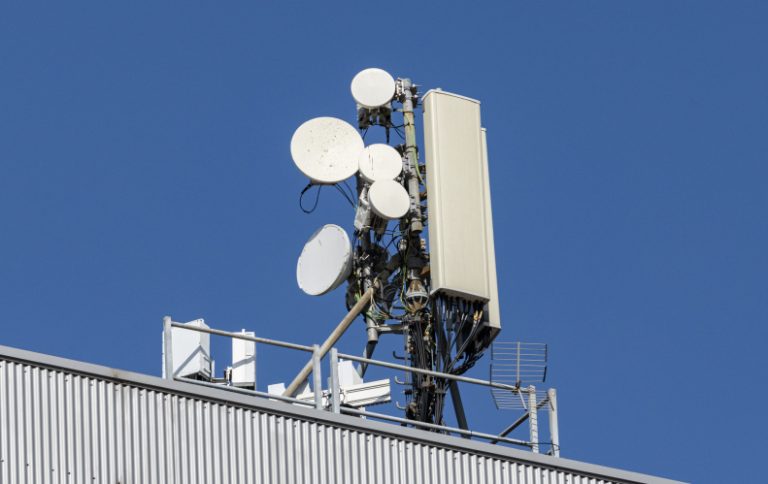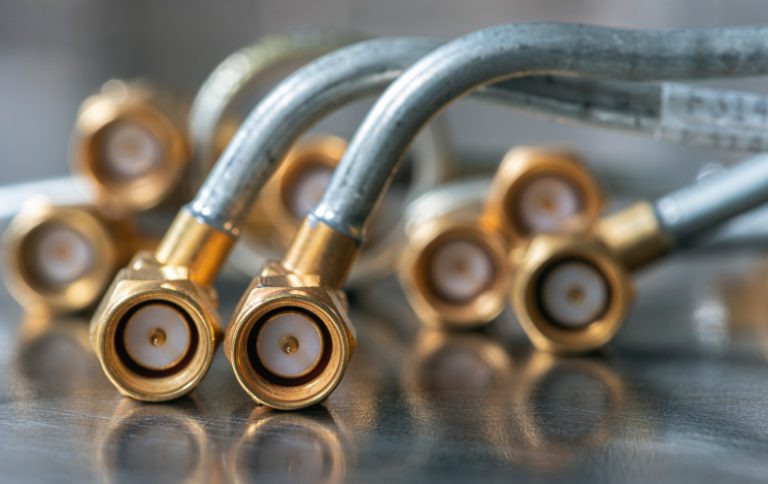Jumper cables are critical components in RF systems, test environments, and industrial setups, acting as short, flexible bridges between devices to ensure uninterrupted signal flow. At Petra Carbon, we engineer jumper cables that combine precision, durability, and adaptability for industries ranging from telecommunications to aerospace. In this guide, we’ll explore the design, applications, and selection criteria for jumper cables, along with how Petra Carbon delivers solutions that outperform industry standards.

What Is a Jumper Cable?
A jumper cable is a short-length coaxial or shielded cable with pre-installed connectors on both ends, designed to connect two RF components (e.g., antennas, amplifiers, test equipment) with minimal signal loss. Unlike standard coaxial cables, jumpers prioritize flexibility and low insertion loss for dynamic or space-constrained setups.
Key Features of Petra Carbon’s Jumper Cables:
- Low VSWR (Voltage Standing Wave Ratio): Ensures maximum power transfer.
- Broad Frequency Range: Supports up to 40 GHz for advanced RF systems.
- Robust Connectors: SMA, N-type, BNC, and TNC options with gold or silver plating.
Explore our RF jumper cable catalog for ready-to-deploy solutions.
Types of Jumper Cables
RF Jumper Cables
Use Case: Connecting antennas to transceivers in 5G base stations.
Features: Double-shielded construction, PTFE dielectric.
Compatibility: Works with RF combiners and panel antennas.
Test Jumper Cables
Use Case: Calibrating Keysight or Teradyne test systems.
Features: Phase-stable, high repeatability.
Pair With: Board test probes for PCB validation.
Industrial Jumper Cables
Use Case: Hydraulic torque wrench controls or sensor networks.
Features: Oil-resistant jackets, EMI shielding.
Integration: Compatible with hydraulic pumps.
Applications of Jumper Cables
Telecommunications
5G Networks: Link antennas to remote radio units (RRUs) with ultra-low-loss jumpers.
Signal Optimization: Use RF combiners to split/combine signals without degradation.
Aerospace & Defense
- Avionics: Lightweight, high-temperature jumpers for cockpit systems.
- Radar Systems: Phase-matched cables for accurate signal timing.
Industrial Automation
Sensor Networks: Connect PLCs to sensors in EMI-heavy environments.
Hydraulic Systems: Durable jumpers for hydraulic torque wrench controls.
Medical Equipment
MRI Machines: Shielded jumpers to prevent interference with imaging signals.
How to Choose the Right Jumper Cable
Step 1: Match Connector Types
- SMA: Ideal for high-frequency (up to 18 GHz), compact systems.
- N-Type: Better for high-power, rugged environments.
Step 2: Determine Cable Length
- Short Jumpers (6–24 inches): Minimize signal loss in test setups.
- Longer Jumpers (3–10 feet): For flexible routing in industrial systems.
Step 3: Evaluate Environmental Needs
- Temperature: PTFE jackets for -65°C to 200°C ranges.
- Flexibility: Braided shields for repeated bending.
For custom configurations, contact our team.
Why Petra Carbon’s Jumper Cables Excel
Precision Engineering: Cables are tested using in-circuit test systems for consistent performance.
Customization: Tailored lengths, connectors, and shielding for unique applications.
Compliance: Meets MIL-STD-202 and IEC 61196 standards.
FAQs About Jumper Cables
What’s the difference between a jumper cable and a coaxial cable?
Jumper cables are pre-terminated with connectors for quick deployment, while coaxial cables are raw cables requiring separate connector installation.
Can jumper cables be repaired if damaged?
Replacement is recommended for critical systems, but temporary fixes can be made using flange alignment tools for connector reattachment.
Do you offer phase-matched jumper cables?
Yes! We provide phase-matched sets for radar and aerospace applications.
At Petra Carbon, we engineer jumper cables that deliver unmatched signal integrity, whether you’re building a 5G network or an industrial automation line.
🔗 Contact Petra Carbon for technical support or explore our Jumper Cable Solutions.
Stay precise, stay safe!



